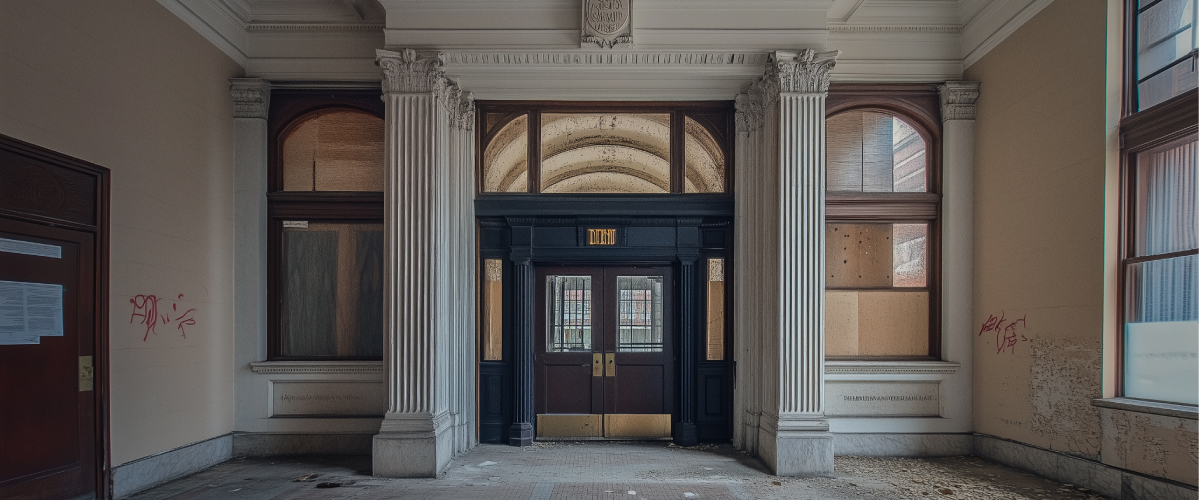More Signs a Global Recession is Headed Our Way
At the end of the trading day on August 22, 2018, the US stock market hit a historic milestone. It became the longest bull market in history, lasting nearly 10 years.
And while there was a brief but intense across-the-board correction in the fourth quarter of 2018, that bull market remains intact—for now. But it won’t last forever.
The warning signs of a global recession are mounting, and it’s time to get defensive.
China’s Economy Is Slowing—And That’s Bad News for Everyone
The 900-pound gorilla in the room is the world’s largest engine of economic growth: China.
-
Official Slowdown: China’s growth slowed to 6.4% in Q4 2018—far below the double-digit growth rates of past decades.
-
Skepticism Around Data: Many experts suspect actual growth is even lower than reported.
-
Impact on Global Businesses: Companies like Apple, Ford, and Fiat-Chrysler have reported sharp drops in Chinese sales.
The Trade War Is Adding Fuel to the Fire
The ongoing trade war with the US has further slowed industrial production in China. Tariffs, though modest so far, have already strained its economy.
Debt and Real Estate Bubbles Loom Large
-
Ballooning Debt: Chinese banks expanded their balance sheets by $15 trillion after the 2007-2008 financial crisis, contributing to a massive credit bubble.
-
Warnings Ignored: Even China’s central bank governor has warned of speculation and real estate bubbles that could lead to global economic catastrophe.
No less concerning is the fact that China accounts for more than 60% of all global credit created in the last decade. This level of debt creation is unsustainable and threatens global stability.
Europe Faces Its Own Recession Threats
China isn’t the only economy slowing down.
-
Italy: Officially in recession for the third time in a decade.
-
UK: Key economic sectors—services, manufacturing, and construction—are contracting at the fastest rate since 2012.
Is the US Economy as Healthy as It Seems?
Despite appearing relatively stable, cracks are forming in the US economy.
-
Declining Earnings: Over 30 companies have revised their Q1 2019 earnings forecasts downward. Analysts now expect a 1.4% decline in S&P 500 earnings, compared to earlier predictions of a 7% increase.
-
Bull Market Vulnerabilities: Falling corporate profits could spell the end of the record bull market.
Protect Your Portfolio: Strategies to Prepare for a Bear Market
1) Use Stop-Loss Orders to Minimize Losses
A stop-loss order instructs brokers to sell an asset when it hits a specific price, limiting potential losses.
-
Blue-Chip Stocks: Consider 15% stop-losses for stable investments.
-
Volatile Stocks: Use wider, 25% stop-losses to account for price fluctuations.
However, beware of “whiplash effects” in volatile markets. Prices may drop sharply, trigger your stop-loss, and then recover quickly. To avoid this, consider stop-limit orders.
2) Consider Stop-Limit Orders
Stop-limit orders protect against flash crashes, ensuring assets sell only at your specified price or better.
Beware Systemic Risk: Lessons from the MF Global Collapse
Systemic financial risk—when an entire system fails—poses a far greater threat than falling stock prices.
The MF Global Case Study
In 2011, MF Global filed for bankruptcy, wiping out $1.6 billion of segregated customer funds.
-
Lesson Learned: Segregated accounts don’t guarantee safety in a systemic crisis. For instance, MF Global used customer funds as collateral for risky bets. This left depositors with little recourse when the investments failed.
Your Money in the Bank May Not Be Safe
When you deposit money in a bank, it legally becomes the bank’s property. In the event of a financial collapse, you are an unsecured creditor.
Global Bail-Ins: A Growing Threat to Your Assets
The 2013 Cyprus banking crisis introduced the world to “bail-ins,” where depositors bear the cost of financial bailouts.
-
G20’s Bail-In Rules: In 2014, G20 leaders approved rules allowing megabanks to use depositor funds as collateral for high-risk investments.
In practice, this means your bank deposits can be converted into equity or written off entirely if the bank becomes insolvent.
-
What This Means for You: If your bank fails, creditors—not depositors—have the first claim on your money.
Recommended Reading
How do you protect against bank bail-ins?
Why have an offshore bank account
How to Protect Yourself from Systemic Financial Collapse
-
Choose Safe, Liquid Institutions: Work with brokers and banks known for their liquidity and stability.
-
Prioritize Asset Protection: Adopt strategies to minimize exposure to government asset seizures.
-
Diversify Your Holdings: Spread your assets across different jurisdictions to reduce systemic risk.
Also, consider holding physical gold or other tangible assets. They can hedge against systemic collapse. These assets remain outside the banking system and are less vulnerable to financial crises.
Final Thoughts: Prepare for the Inevitable
A global recession isn’t a matter of if but when. By taking proactive steps now—implementing stop-loss strategies, safeguarding assets, and diversifying holdings—you can minimize your exposure to financial crises and emerge stronger.
Need Help?
Planning ahead is the key to staying one step ahead of economic turmoil. Book your free, no-obligation consultation with a Nestmann Associate today and learn how we can help protect your wealth.



